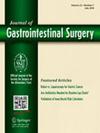Geographic inequities and access to colorectal cancer surgery among rural residents: one size does not fit all!
IF 2.2
3区 医学
Q3 GASTROENTEROLOGY & HEPATOLOGY
引用次数: 0
Abstract
Purpose
Nearly 60 million rural Americans face disparities in cancer surgery access and outcomes within a heterogeneous geographic landscape. This United States population-based study examined regional disparities in access to colorectal cancer (CRC) surgery among rural communities.
Methods
Hospitalization data for rural patients undergoing CRC resections were abstracted from the 2007 to 2020 National Inpatient Sample. Rural patients were identified using the National Center for Health Statistics urban-rural classifications. Four measures were assessed: (i) elective CRC surgery, (ii) elective rectal cancer surgery, (iii) in-hospital mortality after surgery, and (iv) stoma rates. Logistic regression models were estimated to evaluate between-region differences, adjusting for patient- and hospital-level factors.
Results
Among the 331 004 hospitalizations of rural patients who underwent CRC surgery, elective admission rates were highest in the Midwest (76%; omnibus P <.001). Adjusted odds of elective admission were highest in the Midwest and lowest in the South. There were 61 898 rectal cancer surgery hospitalizations identified, of which hospitalizations in the South had the lowest odds of elective admission (P <.001). Hospitalizations of rural patients in the Northeast compared with all other regions experienced 15% to 33% greater adjusted odds of in-hospital mortality after CRC surgery. Adjusted stoma rates were higher in the West (10.3%) than in the Midwest, and the Northeast had higher odds (29.7%) than the South.
Conclusion
Geographic disparities in CRC surgery access among rural residents highlight the heterogeneity of rural America, complicating the challenges of adopting a universal approach to address inequities. Exploring underlying factors of these regional differences, such as variations in provider distribution, hospital resources, and local economic conditions, is essential to guide clinical innovations and policy interventions.
地域不平等与农村居民获得结直肠癌手术的机会:一种方式不适合所有人!
近6000万美国农村人口在不同的地理环境中面临着癌症手术机会和结果的差异。这项以美国人口为基础的研究调查了农村社区获得结直肠癌(CRC)手术的区域差异。方法选取2007 - 2020年全国住院患者样本中农村结直肠癌切除术患者的住院数据。使用国家卫生统计中心城乡分类确定农村患者。评估了四项措施:(i)选择性结直肠癌手术,(ii)选择性直肠癌手术,(iii)手术后住院死亡率,(iv)造口率。估计逻辑回归模型来评估地区之间的差异,调整患者和医院水平的因素。结果在331004例农村结直肠癌手术住院患者中,中西部地区择期住院率最高(76%;综合P <;.001)。调整后的选修课录取率在中西部最高,在南部最低。共有61 898例直肠癌手术住院,其中南方住院患者选择住院的几率最低(P <.001)。与所有其他地区相比,东北地区农村住院患者CRC手术后住院死亡率调整后高出15%至33%。调整后的气孔率在西部(10.3%)高于中西部,东北部(29.7%)高于南部。结论:农村居民CRC手术可及性的地域差异凸显了美国农村地区的异质性,使采用普遍方法解决不平等问题的挑战复杂化。探索这些地区差异的潜在因素,如提供者分布、医院资源和当地经济条件的差异,对于指导临床创新和政策干预至关重要。
本文章由计算机程序翻译,如有差异,请以英文原文为准。
求助全文
约1分钟内获得全文
求助全文
来源期刊
CiteScore
5.50
自引率
3.10%
发文量
319
审稿时长
2 months
期刊介绍:
The Journal of Gastrointestinal Surgery is a scholarly, peer-reviewed journal that updates the surgeon on the latest developments in gastrointestinal surgery. The journal includes original articles on surgery of the digestive tract; gastrointestinal images; "How I Do It" articles, subject reviews, book reports, editorial columns, the SSAT Presidential Address, articles by a guest orator, symposia, letters, results of conferences and more. This is the official publication of the Society for Surgery of the Alimentary Tract. The journal functions as an outstanding forum for continuing education in surgery and diseases of the gastrointestinal tract.

 求助内容:
求助内容: 应助结果提醒方式:
应助结果提醒方式:


